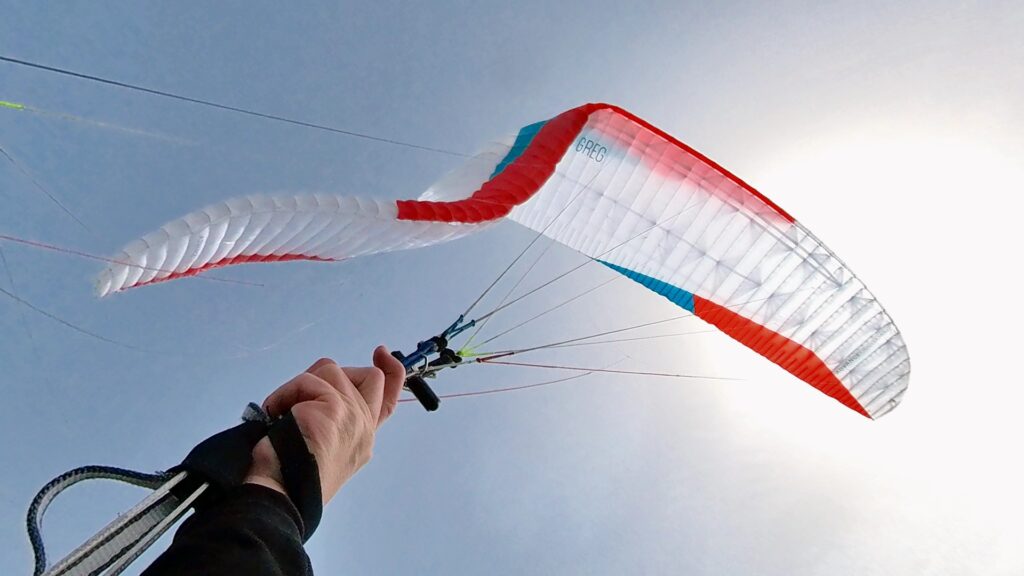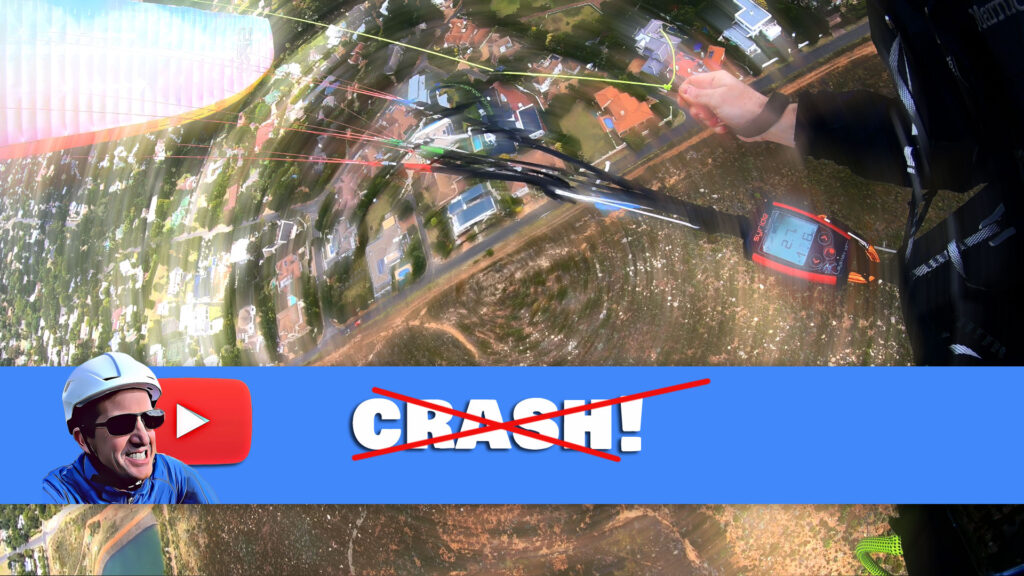Paragliding can be dangerous when you do the wrong things. So in this article I’ll identify some common causes of paragliding accidents, and what you can do to avoid them.
1. CRASH LANDING!
Crash landings are usually caused by poor glider control: a bad approach, landing downwind, turning low, no pitch control, flying into a hazard, landing behind an obstacle, or poor flare timing.
Reduce the risk of a crash by keeping two landing options available within easy glide, and favouring long landing strips, lined up into the wind.
Improve your chances by practicing spot landings, swoop flares, butterfly beats, and always approaching with your legs down.
2. FAILED LAUNCH!
Launch sites can be dangerous places, with steep slopes, rocks, and tricky winds. Control errors can lead to getting overpowered, turning the wrong way, or running at a different speed to the wing causing a sudden lift and dump, a collapse, or a turn into the slope.
Reduce the risk of a failed launch by doing a complete preflight check, setting a clear stop line on your launch, and limiting the range of wind conditions to less than 25km/h and within 45 degrees off straight up the slope.
Improve your chances by practicing your ground handling, on a slope, including smooth launches.

3. COLLAPSED WING!
In most cases, a wing collapse should not lead to an accident. Paragliders can usually be recovered. But according to a study by the FFVL, over 90% of pilots don’t throw their reserve when they should during a collapse that leads to an accident. Practice reserve deployment at home so you’re mentally prepared to do it (you can tie the inner bag shut during simulations, just be sure to untie it again!)
Reduce the risk of a collapsed wing by flying actively (catch the wing using the brakes when it surges forwards).
Improve your chances by getting SIV training to develop your pitch control and collapse recovery. My friend Jocky Sanderson runs regular courses in Turkey. My Academy members get special prices.
4. OVERCONTROL
Panicked pilot inputs can eat away at the aerofoil, causing stalls and spins.
Reduce the risk by using weight shift to control your direction, and making small steady increases in control inputs to recover your wing.
Again, SIV training will improve your chances, but at least practice your stall point at low level (1-2m) to build awareness of what your aerofoil feels like when the airflow breaks away, so you can avoid the stall point.
5. ROTOR
You can encounter turbulence if you misjudge the airflow over terrain.
Reduce the risk by avoiding the ‘wind shadow’ region behind all obstacles, using the rough guide of ‘obstacle height multiplied by the wind speed in mph’.
Improve your ability to guess where the turbulence is by ‘rotor fishing’ with a windsock.
Let’s watch these principles in action
BECOME A SAFE PILOT
With good preparation and a sensible approach, paragliding can be safe. But it takes dedication, training, and constant vigilance to guard against complacency.
Try to reduce the number of risk elements that will impact you to avoid ‘decision overload’.
Learn more about managing these risks and building a safe flying strategy in the academy series How to Avoid an Accident.


